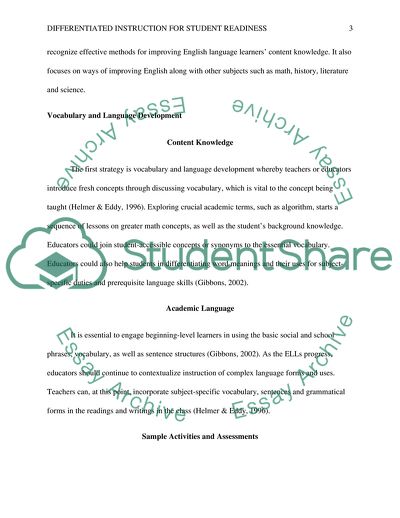Cite this document
(Differentiated Instruction for Student Readiness Literature review Example | Topics and Well Written Essays - 1250 words - 1, n.d.)
Differentiated Instruction for Student Readiness Literature review Example | Topics and Well Written Essays - 1250 words - 1. https://studentshare.org/education/1783283-differentiated-instruction-for-student-readiness
Differentiated Instruction for Student Readiness Literature review Example | Topics and Well Written Essays - 1250 words - 1. https://studentshare.org/education/1783283-differentiated-instruction-for-student-readiness
(Differentiated Instruction for Student Readiness Literature Review Example | Topics and Well Written Essays - 1250 Words - 1)
Differentiated Instruction for Student Readiness Literature Review Example | Topics and Well Written Essays - 1250 Words - 1. https://studentshare.org/education/1783283-differentiated-instruction-for-student-readiness.
Differentiated Instruction for Student Readiness Literature Review Example | Topics and Well Written Essays - 1250 Words - 1. https://studentshare.org/education/1783283-differentiated-instruction-for-student-readiness.
“Differentiated Instruction for Student Readiness Literature Review Example | Topics and Well Written Essays - 1250 Words - 1”. https://studentshare.org/education/1783283-differentiated-instruction-for-student-readiness.


